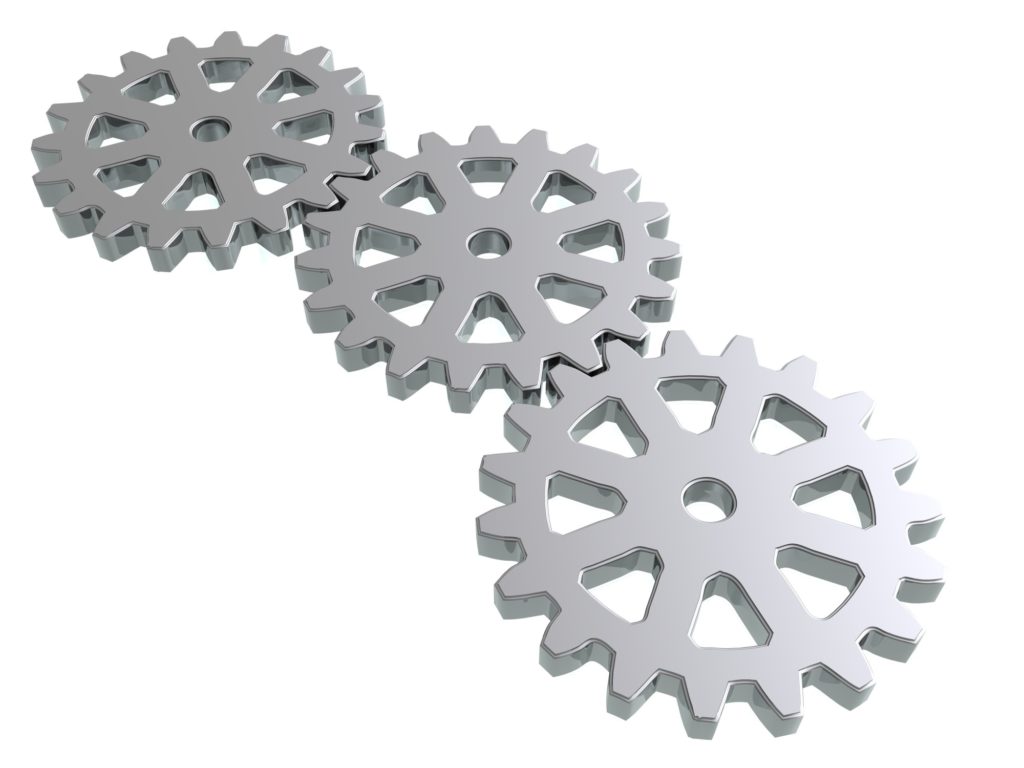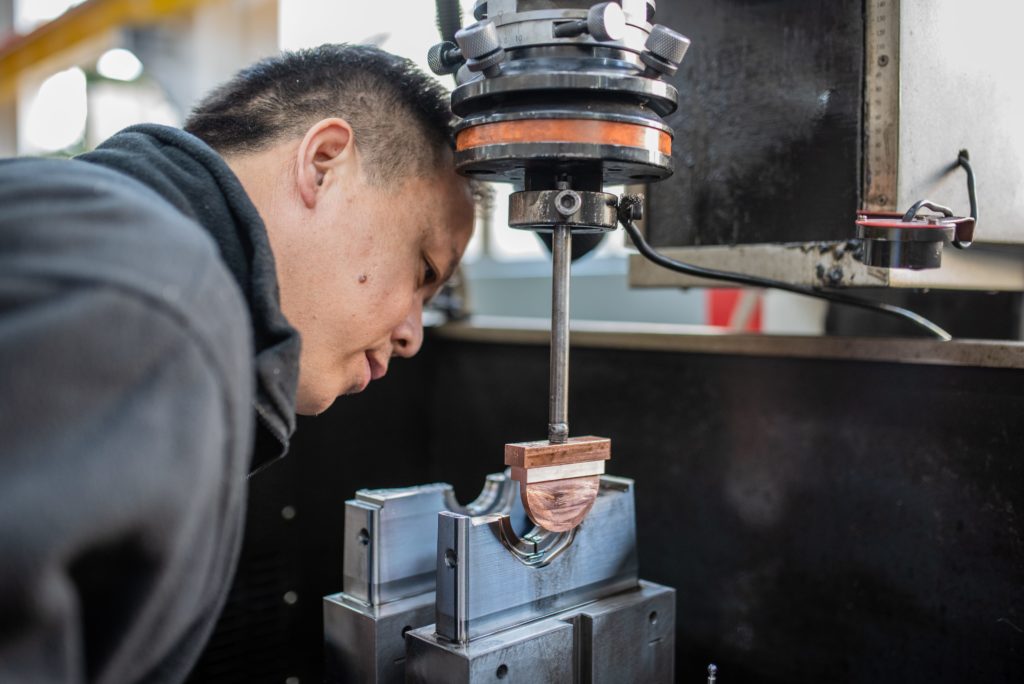What is Metal Machining? Your Complete Guide
Guess what? According to the U.S. Bureau of Labor Statistics, there are almost 470,000 metal machinists in America alone. Not only that, but the metal machining industry is expected to grow by 5,400 in less than a decade?
Interested in learning the machining basics? We’re here to help. Read on to find out everything you need to know about machining processes, machining operations, and more!
Different Kinds of Machining Tools
What is Machining?
Did you know that there are different kinds of machining tools out there? Yes, you read that right. Surprisingly enough, the term “machining” has a lot more behind it than your everyday tools.
As a matter of fact, now machining includes all types of technological techniques to remove, shape, and design material. The craziest part is that most metal parts and components need some type of machining work done during the manufacturing stage as well.
On top of that, additional materials that are used in the machining process include the following:
- Plastics
- Rubbers
- Paper goods
Varieties of Machining Metal Tools
As we mentioned above, there are many different kinds of machining tools on the market. In case you didn’t know, this can neither be used separately or together during the machining process. Now that we’ve got that down, it’s time to take it inside look at tools like:
- Boring tools
- Cutting tools
- Drilling tools
- Grinding tools
- Milling tools
- Turning tools
Known as finishing equipment, boring tools are used to enlarge previously cut holes that have been cut into a certain material. Moving forward, shears and saws are some of the most common cutting tools that you can get your hands on. Designed to cut through tough materials such as sheet metal, cutting tools are ideals for perfecting rough dimensions into a geometrical shape.
How about drilling tools? These typically resemble a double-edge rotating object that punches holes that are parallel to the so-called “axis of rotation.” When it comes to grinding tools, these are usually applied to a spinning wheel to get a smooth finish.
Otherwise, grinding tools are perfect for making gentle cuts onto a piece of work. While milling tools cut out unique shapes, turning tools are best for whittling materials down to sheer perfection!
Burning Machining Technology Types
Common Types of Burning Machining Technology
What would you say if we told you that there are different types of burning machining technology as well? Known to burn through various materials, burning and welding machine tools are used to heat up the workpiece to shape it.
For those of you who are feeling confused, all that you really know is that there are three popular kinds of burning and welding machining technologies, including
- Laser cutting
- Oxyfuel cutting
- Plasma cutting
Examples of Burning Machining Technology
Laser cutters are used to send out a high-energy, narrow light beam to melt, burn, or vaporize materials. This is best for doing things like etching patterns or shaping steel into a solid piece of work. The benefits of laser cutting include things like extreme composition and high-quality service finishes.
Now, let’s discuss oxyfuel cutting. Don’t get confused– this particular method of machining uses a combination of oxygen and fuel gas to cut and melt away materials. Normally, propane, hydrogen, gasoline, or acetylene compounds are used for this process because they’re super flammable.
The perks of using this machinery method include the ability to cut hard materials, decrease dependence on primary sources of power, and easy portability. What’s the real deal about plasma cutting?
We’re glad that you asked. This type of tool works by shooting out a stream of plasma into what’s called an electrical arc. The result is this – it transforms inert gases into what’s known as plasma. Of course, plasma can get really hot to the touch while you’re working with it.
That is because it’s celebrated for its lightning-fast ability to melt any materials that you don’t need anymore. Using ultra conductive metals, this requires little to no prep time to make the ultimate precision cut!
Erosion Machining Technology Types
Common Types of Erosion Machining Technology
Let’s dive right into the different types of erosion machining technology. Despite the fact the burning tools use heat melt away excess material, erosion machines use electricity or water amounts material away from your workpiece. Incredibly enough, the two most common kinds of erosion machining tech tools include:
- Water jet cutting
- Electric discharge machining
Examples of Erosion Machining Technology
In case you didn’t know, water jet cutters use an extremely pressurized water stream to blast through all different kinds of materials.
Want to take it up a notch? All that you have to do is add some type of abrasive powder to its stream of water to erode materials faster than ever before. Pro tip: water jet cutters are usually utilized on materials that have been deformed or damaged from a heat-impacted area.
On the other hand, electric discharge machining tools are used to discharge electrical arches to make tiny craters. This speeds up the results in “complete cuts.” In addition, electric discharge machining is used in apps that call for complicated shapes too.
As if that’s not enough, electric discharge machining tools are great for cutting into tough materials as well. Using a base material to conduct electricity, electric discharge machining tools actually limit its number of ferrous alloys. But what is CNC machining, anyway?
Intro to Computer Numerical Control Machining
What is Computer Numerical Control Machining?
If you’re looking for an intro to CNC machining, then you’ve come to the right place. Also known as computer numerical control, CNC is a type of machining that uses computers to control equipment. Requiring a background in programming software, computer numeric or cultural machining can guide tools to shape pieces of work according to certain parameters.
Compared to traditional guiding methods, computer numerical control machining is an automatic process. Because you’re curious, some of its advantages include the following:
- High cycles of production
- Low cost of manufacturing
- Uniform production
How Does Computer Numerical Control Machining Work?
For those of you who are unaware, high cycles of production occur when the computer numerical control machine has received the proper coding. Once this part is done, it typically needs a little bit of downtime or maintenance to get started.
However, this allows for a much faster rate of production in the long run. How can you beat that?
You might be wondering: what does the low cost of manufacturing have to do with computer numerical control machining? Fair question. Due to its low requirements of manual labor and its high turnover speed, computer numerical control machining a much more affordable process, especially if you’re dealing with high volumes of production.
Besides this, uniform production has to do with keeping all your products consistent, no matter how high the level of production is. Of course, with the computer numerical control machining tool, you’ll never have to worry about this problem again!
All About Precision Machining
What is Precision Machinery?
Want to learn all about precision machining? Luckily for you, we’ve got all the juicy details. In fact, precision machining is key to producing a large number of both small and large materials that we use every single day.
Consider this: each piece that builds up a particular object requires at least a small amount of machinery to function. Similarly, a machine or a tool that has been used often will need a machine tool to calibrate it as well, whether it requires a grooving or a welding process.
For example, aluminum alloys used in airplanes, drilling devices used in bone surgery, and specialized car tools all require precision machining tools to operate. To put it simply, if a certain object has a bunch of parts, chances are that it needed precision machining to be built.
Examples of Precision Machinery
Here’s the thing. Quality precision machine tools have to follow very specifically detailed blueprints made by computer-aided design or computer-aided manufacturing programs such as TurboCAD or AutoCAD. This software can assist the production of complicated, 3-D outlines or diagrams needed to build an object, machine, or tool.
Of course, using a hand-drawn sketch also works during the first stages of the design process too. What types of material are precision machining tools used on? To name a few, these include materials such as:
- Steel
- Bronze
- Graphite
- Glass
- Plastics
Multiple precision machining tools can be used, depending on how large the materials or the projects are. Crazily enough, you can use any combo of saws, drill presses, milling machines, lathes, or grinders to get the job done. You can even use something called high-velocity robotics to do the work as well.
In the worlds of aerospace and woodworking, these tools are used on a regular basis!
Understanding Machining Lingo
Introduction to Machining Lingo
Now that we’ve covered the fundamentals of machining, it’s time to understand the lingo, which includes:
- Speeds and feeds
- Workholding
- Toolholding
For starters, let’s look at the speeds and feeds involved in machinery. This calculation is used to find out what the perfect way to slice through a sheet of metal is.
As if that’s not enough, the speeds and feeds can also be shifted according to the material’s durability or the type of surface finish that you are searching for. Not to mention the style of cut that you are trying to make is a huge factor too.
The next term you’ve got to learn is work holding. Known as a structure or an apparatus manufactured to hold your material steady, this is usually placed on top of a table if you are using a mill. Meanwhile, those that prefer to work with lathes will place the work holding an object on the spinning element.
Ever heard of tool holding? This apparatus or structure is made to hold your tools or your cutting bit. If you are using a mill, this is the part of it that spins. Otherwise, lathe lovers will usually have their tool holding element attached to their tables.
More Must-Know Machining Terms
Craving more must-know machining terms? We’ve got you covered. Some of the last few terms you’ve got to get familiar with include:
- Fixturing
- CAD
- CAM
Similar to tool holding and work holding, fixturing is a structure or an apparatus that is used to hold up your work. What makes fixturing special is that it’s normally customized to fit your particular work as well.
As we talked about above, CAD is a nickname for computer-aided design. These types of programs let you make materials that can be rendered, 3D printed or milled. FYI: CAM means computer-aided machining!
Learn More About Metal Machining Today!
Still, confused about the ins and outs of the metal machining industry? Thankfully for you, we’ve done all the hard work in advance. From different kinds of machining tools and burning machining to erosion machining and CNC machining, our useful guide has everything you need to know.
Not sure what precision machining is yet? Have no fear – it’s what is used to manufacture almost every object with various parts. The wildest part is that it is much easier to understand than you’d think.
For those of you who are having a hard time breaking down the lingo of the machining sector, we’ve got your back as well. Now, get out there and see for yourself!
Want to learn more about metal machining? We highly recommend that you check out a metal CNC machining service now!




 We don´t share your data.
We don´t share your data.
Comment (1)
[…] product’s desired design, in terms of shape, hole diameter, size, texture, and finishing, and this blog post explains what quality metal machining service is all […]